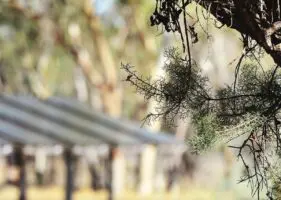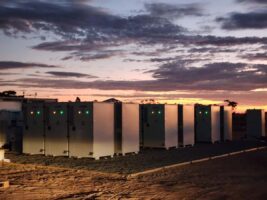My previous article in RenewEconomy looked at the arguments the three NSW distribution networks are using to justify the imposition of export tariffs for rooftop PV and home batteries. This article digs into some more detail about their proposals.
This information is relevant to the entire National Electricity Market. If the Australian Energy Regulators approves the NSW networks’ draft plans, they are likely to become models for the other NEM jurisdictions as they also come up for their five yearly revenue resets.
The table below summarises some of the key features of the export tariffs being proposed for introduction from July 2024. Meanwhile, all three NSW networks have been trialling export tariffs since July 2021. They are not waiting for the results of these trials before proposing to introduce export tariffs from July 2024.

Let’s look at a few key features. (Unfortunately, there isn’t space enough to also dig into the bill impacts of each tariff. They are generally minor, especially if solar owners can face panels to the west, own a home battery or an EV, and/or can shift big loads to the middle of the day. Bill impacts also depend on the extent to which retailers choose to pass through or absorb the network prices in their retail offers.)
Basic export level
The basic export level (BEL) is the capacity networks are required to provide for exports free of charge, based on each network’s intrinsic hosting capacity—that is, the amount of reverse flow the grid as already built can handle without incurring substantial extra costs.
The BELs proposed by Essential and Endeavour make sense given their emerging export capacity constraints, although it is not always clear how they might be influenced by other reforms such as flexible exports (formally known as dynamic operating envelopes).
In other words, could most of the extra solar export capacity be handled by either using tariffs to encourage more daytime consumption, or by adjusting the level of exports dynamically, ramping them up or down depending on upstream grid constraints, rather than going straight to the most expensive option – grid augmentation?
While it appears to be the most generous of the three, Ausgrid’s BEL is also the most problematic. On the evidence provided to TEC, only a small minority of LV distributors are likely to exceed their export hosting capacity—and therefore trigger new “poles and wires” investments which might be recovered from solar exporters—before 2029.
Also, thanks to the limitations of its billing system, Ausgrid is proposing to use an indirect measure – daily exports of up to 6.85 kWh – as a proxy for a 3kW BEL. That might work for a 3kW solar system, but when the average new system is over 7kW, on our calculation it equates to a BEL closer to1.5kW. (Simply put, when you double the system size, you roughly halve the capacity needed to reach a particular volumetric output—in this case, 6.85kWh per day.) So not generous after all, in spite of the relatively low take-up of rooftop PV in the Ausgrid area.
Postage stamp pricing
The bigger problem with the Ausgrid and Endeavour BELs, as well as with the proposed export charges and rewards, is that they are the same for customers across the network. There is no doubt that all three networks have the support of their customers in adopting postage stamp pricing. (Essential has a stronger case for postage stamp pricing in view of the widespread uptake of rooftop solar across its network, along with good evidence of emerging widespread hosting capacity constraints.)
However, if the main aim of export pricing is to recover the costs and benefits of solar and battery exports more fairly, then all that will have happened by 2029 is that one cross subsidy (from non-solar to solar owners) will have been replaced by another (from solar owners whose exports are not causing problems to those whose exports are causing problems for the local grid). Is this the best we can do?
Export charges
Endeavour Energy has lagged behind the other NSW networks in developing its future tariff strategy. It has not yet made public its proposed export tariff prices, so what follows relates mostly to Essential Energy and Ausgrid.
In all three cases, users exporting more than the BEL will be liable for export tariffs during the peak solar period (10 am to 2 or 3 pm). The amounts proposed are relatively small, although they could easily escalate in the following regulatory period.
Essential’s proposal is the more cost reflective, because (rather than a volumetric price per kWh) it’s a two-stage inclining block (the more you export, the higher charge) that reflects the network’s higher cost to serve exports from large rooftop PV systems.
But if you’ve got, say, a 7kW system that on average exports 5kW in the middle of a sunny day, on my back-of-the-envelope calculations you could be up for around $28 per year extra. That may or may not be a material incentive to shift more consumption to the middle of the day.
Ausgrid’s proposed export charge has just been significantly lowered from 1.85 to 1.18 c/kWh following stakeholder feedback (ie, criticism). So they are definitely listening. But the five yearly tariff structural statement doesn’t lock in prices for the whole period. They can, with the AER’s approval, change prices from one year to the next.
Export rebates
Fortunately, all three networks are also proposing to reward users who are able to export energy back to the grid during the late afternoon-early evening peak consumption period. With the possible exception of homes with PV panels facing west, these rebates are likely to be available only to battery owners – and the owners of “batteries on wheels.”
When this capability becomes widely available, EV owners whose cars have vehicle to home (V2H) or, even better, to grid (V2G) capability (not only vehicle to load, V2L) will be able to earn revenue by using smart chargers both to play in the wholesale market and to earn network rebates.
However, the value networks are placing on evening peak exports to the grid varies greatly. In the logic of cost reflective network tariffs, if pumping electrons into the local grid helps to alleviate congestion, then the amount users are paid for this service should be much the same as the network charge for consuming energy during the same period.
Essential appears to be going all the way down the road of “mirror” or symmetrical tariffs, proposing to offer the “same as [the] parent tariff peak consumption rate” for exports from 5-8pm. In contrast, Ausgrid is offering a rebate for exports that is a small fraction of the cost to consume grid power during the evening peak.
Their argument goes that most network costs are sunk (that is, they relate to the cost of servicing loans taken out to build existing infrastructure) rather than ongoing opex or new capex.
Most of the consumption tariff for the evening peak is there to recover these sunk costs, and increasing exports to the grid during the evening peak does not help the network to recover these historic costs. Ergo, the export rebate is a lot skinnier than the consumption tariff for the same period.
But from a solar and battery owner’s perspective, it’s not a good look, and provides little incentive to help lower network costs (and retail bills) by exporting during the evening peak.
The pie thingy
The NSW networks haven’t yet released much detail on how much revenue they expect to earn from export tariffs, and what they intend to do with it. Basically, it will go into the capital and/or operating expenditure buckets in the five yearly revenue proposal, and they can be difficult to reverse engineer.
The relevant line items include DER integration, innovation, smart meter data and ICT upgrades for better visibility of low voltage lines. Ausgrid, for instance, wants to spend “$153 million over the 2024-29 period to develop the capabilities we need to manage the increasingly complex 2-way energy flows and fairly share costs and benefits across all customers”.
Networks were quick to assure solar advocates during the rule change consultation process that export tariffs would not earn them any additional revenue; rather, it was a case of more fairly dividing up the same amount of revenue. The pie analogy – as in, “Tariffs are not about how big the pie is, but how we slice it up” – got a fair workout.
This is not the whole truth, though. Sure, tariffs on different types of users are how networks recover their costs up to their AER-approved revenue cap, and they need to justify new or higher costs independent of how these costs will be recovered via tariffs.
But it is easier for networks to justify higher augmentation costs related to PV exports if they can argue that these costs will be recovered from the customers most likely to benefit (solar and battery owners), rather than from all customers. In other words, in the long run export tariffs can help to supersize the pie.
And the regulated asset base is the gift that keeps on taking – from users. The average lifespan of assets added to the RAB is around 30 years. That’s one very stodgy pie.
Mark Byrne is energy market advocate at the Total Environment Centre. With the end of our current grant, this will be the last article devoted to “keeping the bastards honest”. However, we would also like to thank the staff of the three NSW DNSPs for their dedication to the task of implementing the AEMC’s DER export access and pricing rule change in a constructive and cooperative manner. As the cliché goes, just doing our job.










